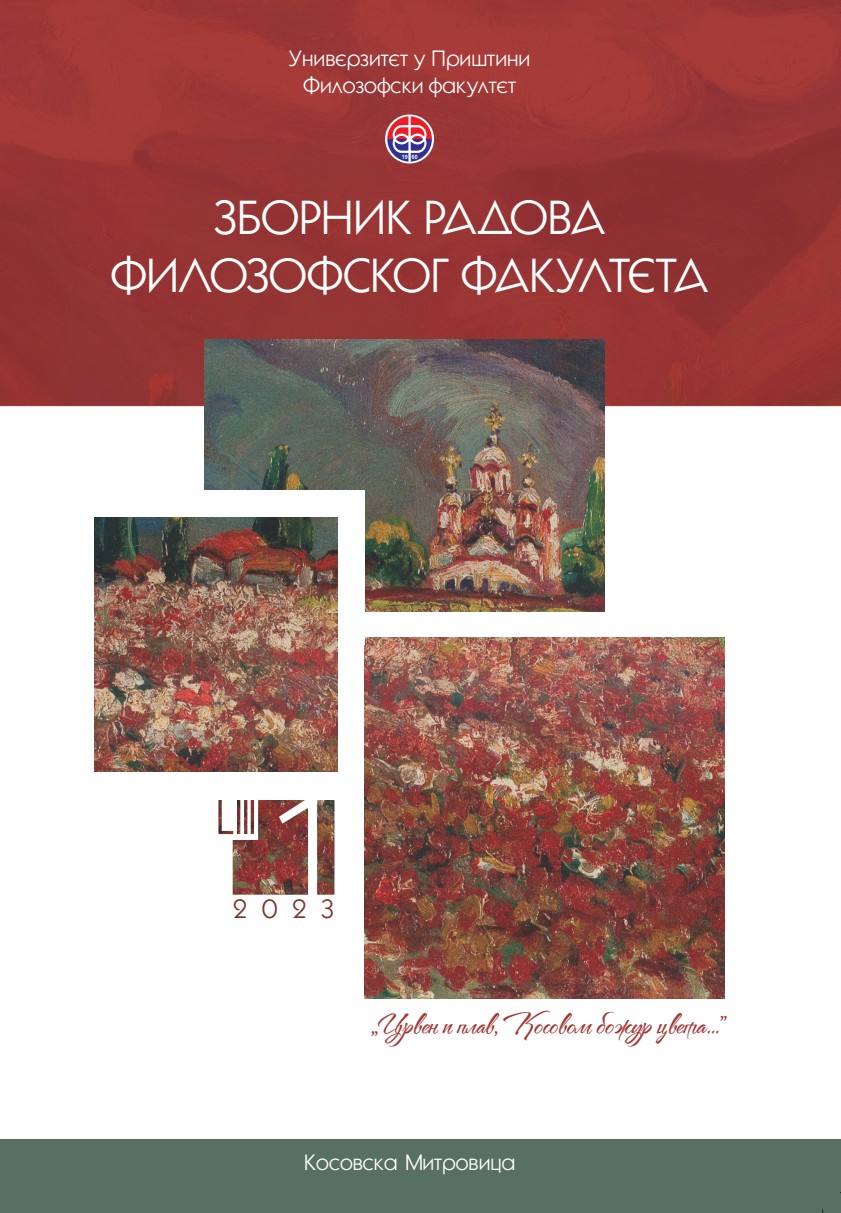Посета краља Петра I Карађорђевића Цариграду 1910. године
Visit of King Peter I Karađorđević to Constantinople in 1910
Author(s): Vesna S. ZarkovićSubject(s): History, Diplomatic history, Political history, Recent History (1900 till today), Pre-WW I & WW I (1900 -1919)
Published by: Филозофски факултет, Универзитет у Приштини
Keywords: King Petar I Karađorđević; Sultan Mehmed V Rešad; Serbia; Ottoman Empire; Constantinople; visit.
Summary/Abstract: The visit of King Petar I Karađorđević to the Turkish sultan is one of the eight visits in modern Serbian history. Seven meetings of Serbian rulers with sultans took place in Constantinople, except for one that took place in Bulgaria. In the visits made before 1878, the Serbian rulers went as vassals. The meeting between the Serbian king and Sultan Mehmed V Rešad in 1910 was the third in a row since Serbia became an independent state. King Petar I Karađorđević spent the second half of March and the first half of April 1910 travelling. First, he visited Russia, then Constantinople, Mount Athos, and finally Thessaloniki. The trip lasted a little over 24 days, six of which he spent in Constantinople. The Serbian delegation led by the king was warmly received by the sultan, the common people, and the Christian population living in the Turkish capital. Upon their return, the members of the delegation were convinced that Turkey would remain on the path of improving Serbian-Turkish relations, friendly agreement, and strengthening of economic relations. This intention was highlighted in the official statement of the Porte published on the occasion of the visit of the Serbian king. In the announcement, it was expressly emphasized that a complete agreement was reached at the conferences of the foreign ministers of the two countries and that the Turkish side will grant Serbian wishes for strengthening economic and trade relations. It was of great importance for the Kingdom of Serbia to remove the obstacles that existed until that time regarding the construction of the Adriatic railway. In addition, practical results were achieved because Turkish officials expressed their readiness for the greatest possible benefits that would contribute to the export of Serbian goods through Thessaloniki. The visit to Constantinople brought success in the issues regarding religion as well, because after four years of resistance, the Patriarchate and the Synod, just before the king’s arrival, accepted the election of the Serb Varnava Rosić as bishop of the Veles-Debar eparchy. The meeting of the two rulers received great attention in the diplomatic circles of European countries, especially Austria-Hungary. The relations between Serbia and the Ottoman Empire, apart from the economic aspect, soon fell into the shadows due to the Albanian riots and rebellions that engulfed the entire Kosovo vilayet. In that case too, the Serbian state tried not to interfere in Turkey’s internal affairs.
Journal: Зборник радова Филозофског факултета у Приштини
- Issue Year: 53/2023
- Issue No: 1
- Page Range: 167-183
- Page Count: 17
- Language: Serbian

